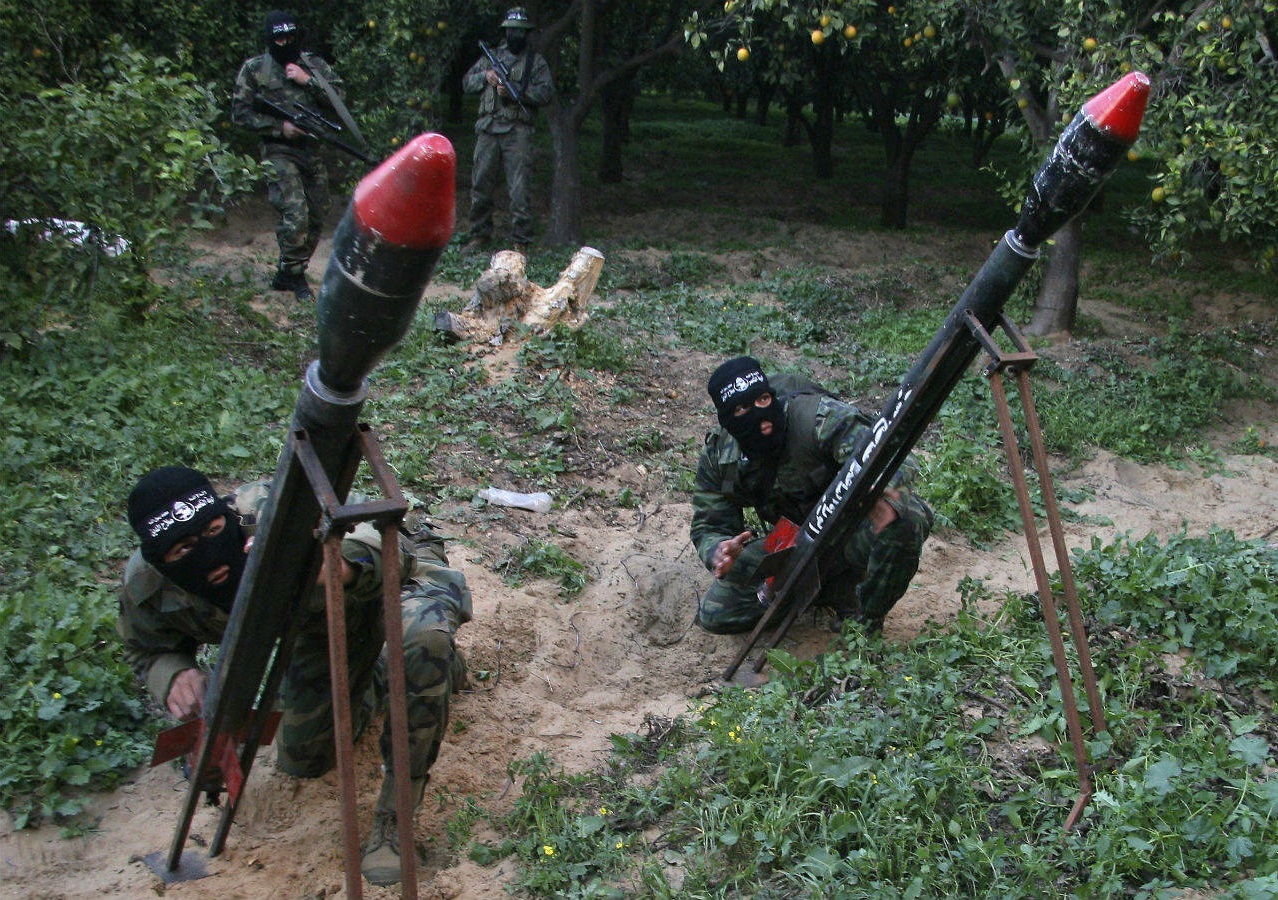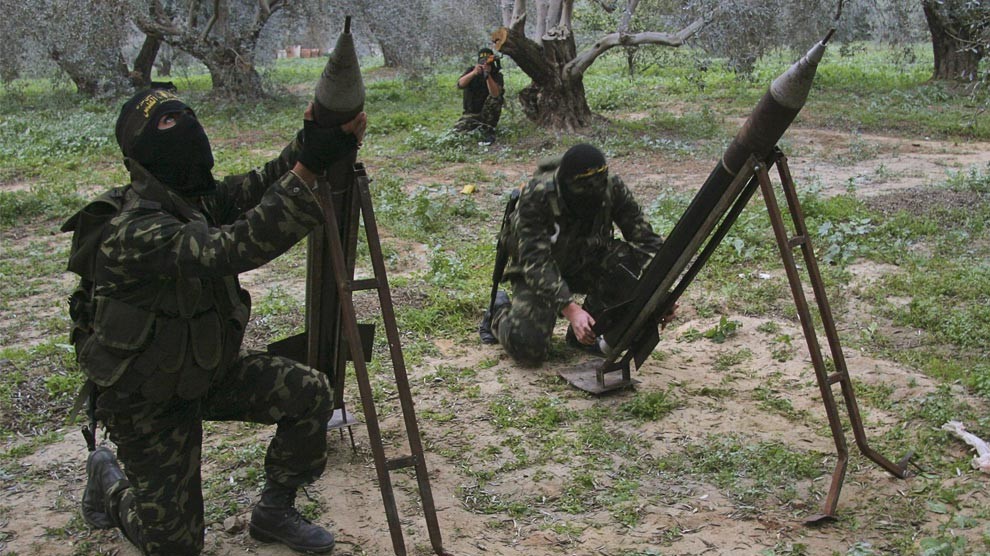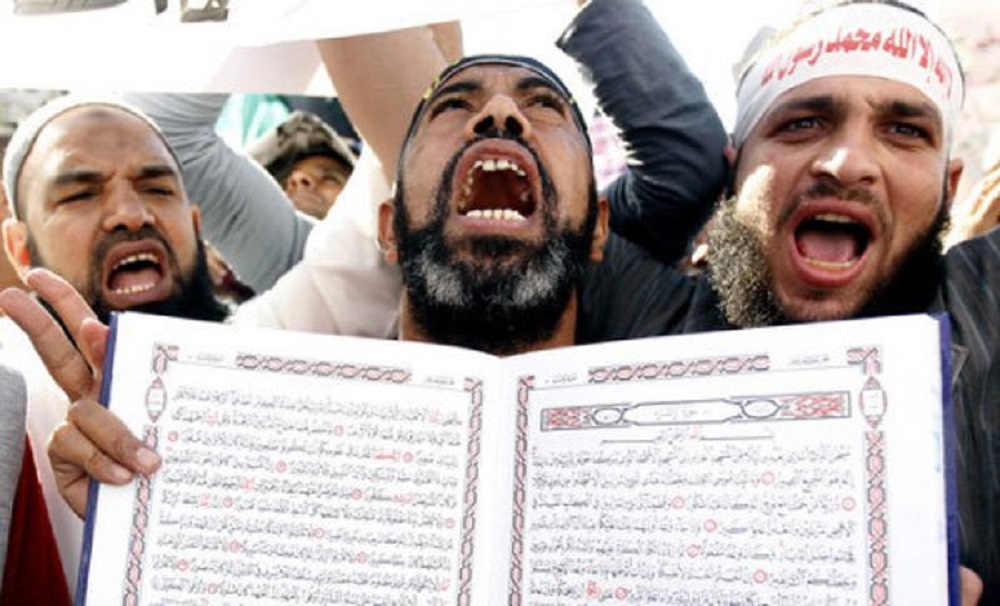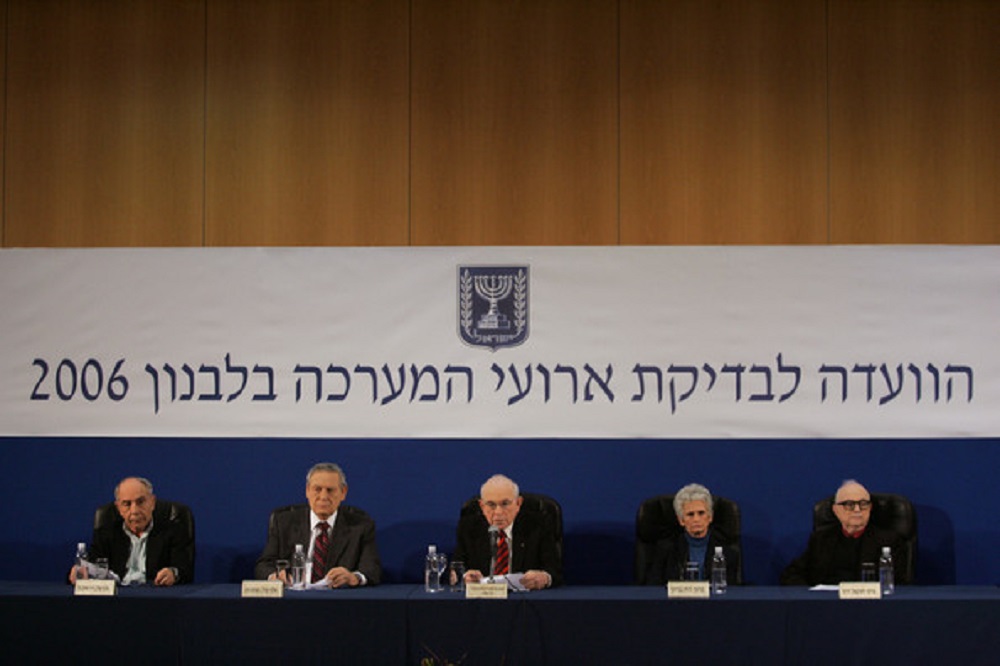Gaza’s Quandary
With a new President assuming control of Middle East policy, Israeli forces withdrawing from Gaza, and the Europeans and the Egyptians discussing ways and means to restrict Hamas’s ability to re-arm through the Philadephi corridor bordering Egypt, there is rising optimism in Washington diplomatic circles that such actions will preempt future conflicts between the Israelis and the Palestinians in Gaza.
Scant attention, however, is being paid to the continuing role the UN is playing in sowing the seeds of future discord. Separate and apart from the strategic error of leaving Hamas’s missile launching capability intact in the wake of the conflict, a far greater problem continues to fester in Gaza – a problem which, if not resolved, will inevitably lead to future conflicts.
During the recent Israeli-Hamas War, twenty-one Palestinians were killed in an IDF attack on a Hamas terror cell that was firing mortars at Israeli forces in or near a UN Relief and Works Agency (UNRWA) school in Jabalya. But omitted from the scorn heaped on Israel was the fact that UNRWA, despite its denials, has a long history of allowing its ambulances, schools and other facilities to be used by terrorist groups.
In May 2008, Reuters reported that Awad al-Qiq, a Palestinian Islamic Jihad rocket engineer, had been serving as a science teacher and deputy headmaster at the Rafah Prep Boys School run by UNRWA. By day al-Qiq was an academic; by night, he was a bomb-maker. Al-Qiq was killed in an Israeli air strike while supervising a factory assembling missiles and other weapons for use against Israel – a factory located just a short distance from the school.
Earlier, on April 25, 2007 the UNRWA representative in New York, Andrew Whitley, revealed to congressional staff that UNRWA had provided cash assistance to the families of Palestinian suicide bombers.
And these are not isolated instances.
In May, 2004, armed Palestinians were filmed using UNRWA ambulances to transport terrorists and possibly the remains of fallen Israeli soldiers in Gaza.
In September 2003, after an Israeli military court convicted three UNRWA employees for terrorist activities including throwing firebombs at a public bus, Israel detained at least sixteen other UNRWA staff members for various security-related matters, and Saeed Siam, Hamas former interior minister and one of the leaders of Hamas’s military wing, taught in UNRWA schools from 1980 to 2003 and served as a representative to the UNWRA union. He was killed during an Israeli air strikein the December 2008 Gaza War.
In December 2002, a Shin Bet report indicated that numerous UNRWA facilities in the West Bank and Gaza had been used by Palestinian terrorists as meeting places and for weapons storage.
In August 2002, Nidal Abd al-Fattah Abdallah Nazzal, a Hamas member and ambulance driver employed by UNRWA, confessed to transporting weapons and explosives in an UNRWA ambulance, and that he had taken advantage of the freedom of movement he enjoyed to transmit messages among Hamas members in various Palestinian towns.
And Sheik Ahmed Yassin, the man who founded Hamas, worked as a UNRWA teacher from 1967 to 1994. Aaron Klein of WorldNetDaily notes that on July 6, 2001, Hamas convened a conference in the UNRWA school in the Jabalya refugee camp in Gaza, with students, teachers and school administrators in attendance. Yassin presented his ideology, and then an official named Saheil Alhinadi, who represented the teaching sector of UNRWA, praised students who had recently carried out suicide attacks against Israel, declaring “the road to Palestine passes through the blood of the fallen, and these fallen have written history with parts of their flesh and their bodies.”
At around the same time, Nahed Rashid Ahmed Attallah, UNRWA’s Director of Food Supplies for Gaza admitted using UN vehicles on multiple occasions to transport arms, explosives, and terrorists to carry out attacks against Israeli soldiers, while in February 2002, Alaa Muhammad Ali Hassan, a Fatah Tanzim member, confessed that he had carried out a sniper shooting from the school run by UNRWA in the al-Ayn refugee camp near Nablus. He also told Israeli authorities that bombs intended for terrorist attacks were being manufactured inside the UNRWA school’s facilities.
UNRWA has also been in the business of cultivating new terrorists for years. In 2000, The New York Times exposed that UNRWA had allowed terrorist groups to use their schools as “summer camps” so that 25,000 Palestinian children could receive paramilitary training, including instructions on how to prepare Molotov cocktails and roadside bombs, and Said Siyam (who was killed in the recent Gaza War), Hamas’ former interior minister and head of its Executive Force, had been a teacher for over two decades in UNRWA schools.
Given this almost symbiotic relationship between UNRWA and Hamas, it should come as no surprise that textbooks obtained from UNRWA schools have glorified suicide bombers as “martyrs.” According to Jonathan Halevi, a former Israeli Defense Forces intelligence officer who specializes in Palestinian terrorist organizations, over 60% of suicide bombers have been educated in UNRWA schools.Moreover, UNRWA schools have produced such notable graduates as Hamas Prime Minister Ismail Haniyeh, and Abd al-Aziz Rantisi, the former Hamas chief who attended the UNRWA secondary school in Khan Younis.
“In the UNRWA union elections, held on June 14, 2006”,Halevi writes, “Hamas won an exceptional victory, taking all 11 seats allotted to representatives of UNRWA teachers, all nine seats allotted for the service sector (doctors, nurses, pharmacists and engineers), and three of the seven seats allotted to other workers. … Suhil el-Hindi, head of the teachers sector at UNRWA schools, operates openly as Hamas’ representative. He controls the curriculum in UNRWA schools, the employment of teachers in those schools, and the summer camps… Following the military takeover during which Hamas took control of the Gaza Strip in June 2007, reports were received, including from Palestinian human rights organizations, that armed Hamas forces had taken over UNRWA institutions in the Gaza Strip, and had even lodged operatives belonging to its military-terrorist wing, the Izz al-Din al-Qassam Brigades, in some of them.”
UNRWA’s interests in Gaza are so deeply intertwined with terrorism and so aligned with Hamas’ interests that it is often difficult to tell them apart. To any impartial observer, it would not be a stretch to conclude that Hamas’s use of UNRWA schools, ambulances and other facilities has become an integral part of its strategy. The problem, of course, is that the international media is anything but impartial when it comes to Israel.
But what should be of greater concern to the Western funders of UNRWA is the overwhelming evidence that UNRWA has become a welfare haven for millions of Palestinians. Thanks to the West’s largesse through UNRWA estimated at over $400M per year, nearly the entire population of Gaza lives on unlimited welfare that subsidizes its population boom. Between 1950 and 2007, Gaza’s population jumped from 240,000 to nearly 1.5 million – a population supported almost entirely by international charitable donations provided not just to the original Palestinians defined by the UN as “refugees”, but to millions of their descendants. In the case ofGaza’s Palestinians, aid programshave proven to beimmortal. What started out with the intention of resettling the Arab refugees was thwarted by the Arab countries such that UNRWA was transported into a vehicle for their maintenance rather than resettlement.
As Ruth King and Rael Jean Isaac wrote in Putting First Things First – Solving the Arab Refugee Problem:
“Nothing better illustrates UNRWA’s transformation than its response to an Israeli effort, in the mid 1980s, to improve the lives of Arab refugees in the Gaza Strip by constructing new housing for them. UNRWA protested to the UN and on December 3, 1986, the General Assembly passed a resolution demanding Israel “desist from the removal and resettlement of Palestinian refugees in the Gaza Strip and from the destruction of their shelters.” It declared that “measures to resettle Palestinian refugees in the Gaza Strip away from the homes and property from which they were displaced constitute a violation of their inalienable right of return.” Similarly, when Israel built new homes for residents of a camp near Nablus, UNRWA forbade anyone to move into them and posted a guard at the empty houses to make sure no one moved in. The Shuafat camp is within the municipal boundaries of Jerusalem and the city offered to give it full services in street paving, sewers and other urban amenities; UNRWA forbade it.
By placing Gazans on perpetual welfare, UNRWA has insured that they will remain “refugees” and a source of chaos for Israel and for themselves for another sixty years. (1)
In a recent article in Wall Street Journal Europe, Gunnar Heinsohn charges that the reason for Gaza’s enormous birth rate is that a large majority of its “refugee” clientele does not have to provide for their children since most Gazans are provided with cash, goods, food, clothing, medical care, vaccinations, schooling, and housing through UNRWA while Muslim nations “generously” contribute military hardware and weapons to Gaza’s idle, unemployed and radicalized youth.
Unrestrained by such necessities as having to earn a living to support their families, Gazans have had plenty of time to dig tunnels, join gangs, undertake arms smuggling, assemble missiles, and fire thousands of them at Israeli cities, towns and kibbutzim. While this gruesome activity may have slowed the Palestinians’ own internecine gang slaughters, it has forced some 250,000 Israelis into bomb shelters, and the current situation can only be expected to get worse.
So long as Gazans are idle and remain on the international dole, Gazan teenagers will have no future other than war. According to the Italian newspaper Corriere della Serra a doctor at Shifa Hospital in Gaza City was quoted as saying that, despite Hamas and UN claims, most of those killed in Gaza were young men who were members of terror groups. “The number of deaths was between 500-600…..most were young men between 17 and 23 who were recruited into the ranks of Hamas, which sent them to be slaughtered”, so the problem with Gaza’s demographic time-bomb is that for every young jihadist killed, three others will be taking his place in future. Some 230,000 Gazan males between the ages of 15 to 29 will be succeeded by 360,000 more under the age of 15 (or 45% of all Gazan males) who will be training as shahids over the next 15 years.
As Heinsohn notes: “By generously supporting UNRWA’s budget, the Europeans (who contribute 55% of that budget) and the Americans (who contribute 31%) assist a rate of population increase that is ten times higher than in their own countries. Much is being said about Iran waging a proxy war against Israel by supporting Hezbollah and Hamas. One may argue that by fueling Gaza’s untenable population explosion, the West itself is unintentionally financing a war by proxy against Israel.”
If we seriously want to avoid endless war, the Palestinians of Gaza must be told that they will have to start taking care of their own children without UNRWA aid. Hopefully, this would force them to focus their energies on building an economy and a Palestinian state instead of waging permanent war against Israel and each other.
(1) For a more detailed analysis of UNRWA, see Arlene Kushner, UNRWA: Overview and Policy Critique, October 1, 2008, Center for Near East Policy Research




